Ralph Paine – 17 December, 2023
Will our attempts at functioning inside Optimism's algorithm be monitored? No doubt many human-animals-with-recording-devices will wander in and through the Atrium, but will their (our) movements be digitally recorded by the hovering/hanging Things themselves—the wicked satellites—and stored on some remote database as information? Is Denny intending to sell our digitalised actions on the AI training set market? Are we parts of a security function? A social-sculpture function?
Tamaki Makaurau
Simon Denny
Optimism
2 December 2023 - 27 October 2024
Becoming is not imitating.
—Deleuze and Guattari
We are the unspecified enemy, the hunted. Each of us has the Idea of the Rocket implanted in our brains, our Mem-brains. The Idea integrates us, shadows us, tracks us, pursues us surface to surface, screen to screen. Vectors of speed, we are the motors of the Idea of the Rocket.
◻ ◻ ◻ ◻ ◻
Sardonically, the artist Robert Smithson remarked that the moon landings as seen on television during the late 60s and early 70s seemed to him the ultimate and most expensive of non-sites: techno-science displacing itself and thus revealing its own banal essence. In Thomas Pynchon’s 1973 novel Gravity’s Rainbow, the Rocket occupies the very centre of a cybernetic-thermodynamic World Order. Pynchon refers to this order as the They-system, meaning those who operated for profit across both sides during WW II, global-historical agents of Entropy and Information (IBM, for example). In contrast, the final section of the novel—titled ‘The Counterforce’—explores the lives of a group of characters who inhabit The Zone, a realm where negentropic forces are transforming wastelands, bombed out buildings, and ruined lives into the fertile humus of a new Earth.
◻ ◻ ◻ ◻ ◻
SPACE-JUNK ↔ JUNK-SPACE
Wicked satellites. Two of them, hovering/hanging high-up in the North Atrium. Vast metal-gridded glass wall to the west, tall exterior wooden pillars and canopies at close view, tree-like. Rain drenched courtyard and street below, incessant waves of traffic, cityscape beyond, grey sky. An airy light-filled interior, big and all encompassing. Tall interior wooden pillars and canopies-as-ceiling. Two levels of walkway, stairways, balustrades, lift doors, and lead-in spaces. Open doorway to the north, seated silhouettes in the café’s window above, large horizontal window next level up. Signage, some random freestanding black lockers, an audio mixing deck and group of tall speakers on chrome stands to the south. Polished stone floors and sections of interior walls, wood ‘n’ leather benches. View to water-feature through large window to the east, flowering Pohutukawa beyond, etc. etc. A curatorial wall text plus three variously placed whiteboards displaying screen printed technical/conceptual diagrams with cursive script declare the presence of Simon Denny’s Optimism: information, instruction, order-words.
◻ ◻ ◻ ◻ ◻
Turns out the wicked satellites ain’t satellites at all. What they are are greatly enlarged 3-D printed replicas of two patented parts from Rocket Lab‘s rocket engine inventory. Rendered in white matt plastic using downloaded schematic drawings, the replicas include various numbers and connecting rods indicating parts of the parts, 3-D numbers and rods that add antennae-like elements to the big hovering/hanging Things.
◻ ◻ ◻ ◻ ◻
“But the Rocket has to be many things, it must answer to a number of different shapes in the dreams of those who touch it—in combat, in tunnel, on paper—it must survive heresies shining, unconfoundable … and heretics there will be: Gnostics who have been taken in a rush of wind and fire to chambers of the Rocket-throne … Kabbalists who study the Rocket as Torah, letter by letter—rivets, burner cup and brass rose, its text is theirs to permute and combine into new revelations, always unfolding … Manichaeans who see two Rockets, good and evil, who speak together in the sacred idiolalia of the Primal Twins … of a good rocket to take us to the stars, an evil Rocket for the World’s suicide, the two perpetually in struggle.” (Thomas Pynchon, Gravity’s Rainbow, p. 727).
◻ ◻ ◻ ◻ ◻
In line with Pynchon’s brief typology, doubtless Denny is a Rocket Kabbalist, compulsively obsessing over parts as if letters in a text overflowing with yet to be revealed religious secrets. But is he a Rocket Manichaean? Does he see two Rockets, one good, one evil, in perpetual struggle? Or does he have eyes only for a good Rocket? An evil Rocket? What is Denny’s Idea of the Rocket?
◻ ◻ ◻ ◻ ◻
Our Mission, should we accept it: to seek out that which lies hidden within Optimism. Using AppleTM devices, to scan a QR code and venture forth into the virtual interiority of the project’s essence. To aim the devices at the hovering/hanging Things, whereby an augmented reality image of them will be revealed on our screens. Suddenly the Things-on-screen will glow as if from within, a swirling multicoloured fractal effect, cosmic & cloud-like. Emitting from the Things-on-screen, variously angled vectors of acid yellow light will appear to travel down through the Atrium space-on-screen to locations on the polished stone floor, there creating super-positioned and pulsed concentric circles of yellow light-on-screen. Guided by our devices, to walk to one of the pulsing-on-screen locations. To face back into the Atrium space. To aim our devices into the space. To see a fresh image-on-screen appear, a shiny world exposed. To repeat these actions for each vector of yellow light. In this manner, many shiny worlds will be exposed. To experience voluntarily an Affect of Capture. To be caught in the logic of Optimism’s algorithm, that is to say, its set of detailed instructions for an “automated, step-by-step procedure.” (Matteo Pasquinelli, The Eye of the Master: A Social History of Artificial Intelligence, p. 30).
◻ ◻ ◻ ◻ ◻
THE PARANOIA OF PARTICIPATION
Will our attempts at functioning inside Optimism‘s algorithm be monitored? No doubt many human-animals-with-recording-devices will wander in and through the Atrium, but will their (our) movements be digitally recorded by the hovering/hanging Things themselves—the wicked satellites—and stored on some remote database as information? Is Denny intending to sell our digitalised actions on the AI training set market? Are we parts of a security function? A social-sculpture function? And given the scary content of Denny’s on-line discourse—hyper-attraction to cybernetic-capitalism, accounts of deep dive research into the California Ideology and its enclave thinking, geeky interests in cryptocurrencies and NFTs, fascination for neo-reactionary founders Peter Thiel, Elon Musk, Kim Dotcom et al, eulogies to Space Cadetship, the blah blah of tech-boosterism, etc. etc.—is he in the last instance nothing but a lawyered-up They-system operative? Our spidey-sense has been activated.
◻ ◻ ◻ ◻ ◻
“You’re a novice paranoid … Of course a well-developed They-system is necessary—but it’s only half the story. For every They there ought to be a We. In our case there is. Creative paranoia means developing at least as thorough a We-system as a They-system.” (Thomas Pynchon, Gravity’s Rainbow, p. 638).
◻ ◻ ◻ ◻ ◻
Whereas Disneyland’s commodified and propaganda-filled nowheresville comprises Frontierland + Tomorrowland + Fantasyland + Adventureland, Optimism comprises eight virtual worlds: Liberty World + Capital World + Festival World + Innovation World + Frontier World + Familiar World + Elven World + Pioneer World. Nothing “Untimely” or “Aternal” to see here. (Gilles Deleuze and Felix Guattari, What is Philosophy?, pp. 111 - 113). None of these different worlds hit differently. They’re all cliches, reruns, imitations—a selection of worn-out representations from yesterday’s They- and We- systems. Digitalised mashups of stock imagery in the style of Empire. We’ve seen their likes a thousand times before: at the movies and on TV, in myriad advertising and marketing campaigns, on the covers of corporate reports and sci-fi/fantasy novels, on high-end architectural/urban design renderings, inside glossy brochures for luxury retirement complexes, while gaming on XboxTM, on posters and paintings from Mao-era China, adorning the well-thumbed pages and back covers of 50s and 60s National Geographic … It’s tricky figuring Denny’s game here, for surely he’s aware of his own Rerun Affect. Is this a simple case of reminiscence, of longing and nostalgia, as if Optimism is attempting to preserve some weirded-out fidelity to the ideological power of these recently old, imagined worlds? Or is something way more critical at play, if not to say something way more mocking and sceptical? We cannot decide.
◻ ◻ ◻ ◻ ◻
Without question the Optimism project projects us ‘nowhere.’ Which anagram-wise—and fortuitously—is at the same time ‘now here.’ But also, Erewhon. In the mid-nineteenth century an Englishman named Samuel Butler travelled to Aotearoa. Arriving in Christchurch, he soon purchased a high-country property out beyond Methven at the back of the Canterbury Plains. Butler ran sheep there for a few years and then sold-up, returning in 1864 to London where subsequently he wrote a novel called Erewhon. It’s a utopian novel, narrating the lifeways of an imaginary civilization which the protagonist of the story has discovered (with the aid of a Māori guide!) on the further side of the Southern Alps. Remaining in the utopian spirit of Butler’s book, we note that while the name Erewhon expresses a sense of nowhere or non-place, it also places this non-place in this place, here and now. In this regard, utopia may be thought of as something—some social factor-x or ineffable collective desire—which, although assembled by and existing within the real of present conditions, nevertheless resists, subtracts itself from, escapes the givens of these conditions, these conditioning conditions. (See Deleuze and Guattari, What is Philosophy?, p. 100).
◻ ◻ ◻ ◻ ◻
Back in the Atrium we remain captured. Shiny virtual worlds continue to be displayed and registered. Refresh, repeat. Refresh, repeat. Our wrists and arms are tiring when all of a sudden glitches start appearing on screens. Signal to noise ratios getting outta synch, it’s all being-there-during-breakdown, a malfunctioning vibe, static. One split second a virtual world is on screen, the next the Atrium space. And vice versa. Zigzag, flick flick—the Schiz. Another paranoid thought: did Denny include a potential glitch effect in his system? Is Optimism preprogramed to malfunction, at random? Or is this just a Bad App? We pocket our overheated AppleTM devices and exit the building, subtracting ourselves from the givens of its conditioning conditions, that is to say, its non-resistant embeddedness within the contemporary art They-system. We will not retreat to any anarcho-capitalist enclave, temporary autonomous zone, gated community, or colony, nor seek comfort in any “hypothetical unity of the Subject,” but disperse ourselves camouflaged, molecularised, milieu to milieu, landscape to landscape across “the fertile chaos” of our becoming-imperceptible, our becoming-haze. (Tiqqun, The Cybernetic Hypothesis, pp. 166 - 67).
◻ ◻ ◻ ◻ ◻
This is a first step toward renouncing the Idea of the Rocket, of ridding ourselves of its motorised/motivating force, its cybernetic-capitalist commands and imperatives: techno-fixes, communication and control, transparency and clarity, identity, the neutralisation of all forms of contagion, massive exploitation, devastation and displacement, Total Peace = Total War, carbon despotism (witness COP 28), etc. etc. “Becoming-haze means that we finally take on the dark side that commands us to believe in all the fictions of direct democracy insofar as they would ritualize the transparency of each person to their own interest and of all to the interests of all. Becoming-haze is to recognize that one doesn’t represent anything, that one is not identifiable. It’s to assume the untotalisable character of the physical body as well. It’s to open oneself to possibilities that are not yet known.” (Tiqqun, The Cybernetic Hypothesis, pp. 160 - 61).
◻ ◻ ◻ ◻ ◻
Meanwhile, near ground zero, tears of Mahia fall into the sea …
Ralph Paine
Special thanks to Cato Johnston.
Recent Comments
John Hurrell
Readers curious about the US/NZ partnership over the funding of military satellites might find this recent article interesting... https://www.rnz.co.nz/news/national/505133/space-race-puts-pressure-on-new-zealand-defence-force
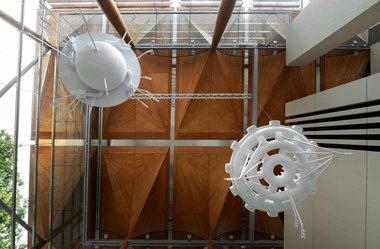
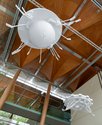


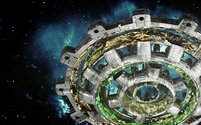


 Advertising in this column
Advertising in this column Two Rooms presents a program of residencies and projects
Two Rooms presents a program of residencies and projects
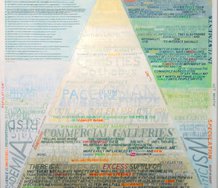
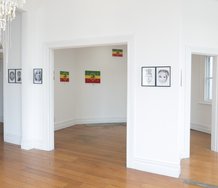

This Discussion has 1 comment.
Comment
John Hurrell, 1:13 p.m. 20 December, 2023 #
Readers curious about the US/NZ partnership over the funding of military satellites might find this recent article interesting... https://www.rnz.co.nz/news/national/505133/space-race-puts-pressure-on-new-zealand-defence-force
Participate
Register to Participate.
Sign in
Sign in to an existing account.